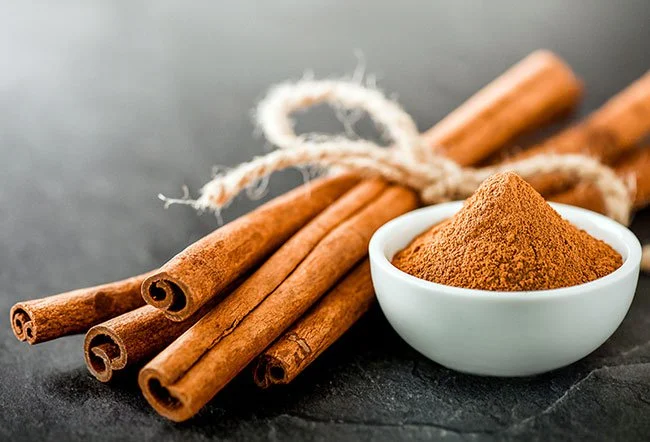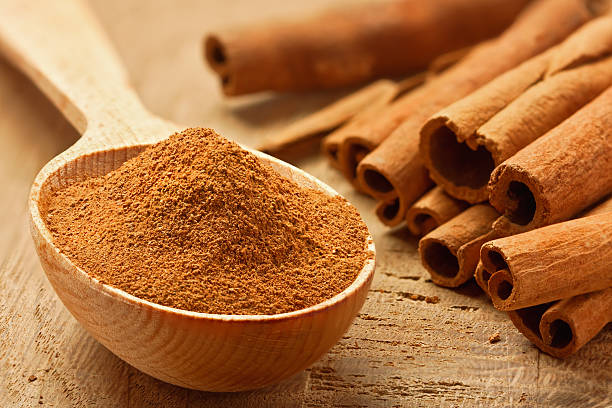
Cinnamon, whose name goes back to the Phoenician language, is one of the spices that were used in the past, and it is extracted from the bark of several species of the genus of scholars, and it is one of the evergreen trees that belong to the Laurel family. In the crematorium, and others. Cinnamon is the best kind of spice, and it is added ground to foods or sprinkled on the top layer in desserts, dishes and baked goods, such as: toast, and drinks; As a latte, cinnamon bark extract has been used around the world for medicinal purposes.
3 Different Types of Cinnamon :
There are about 100 different types of cinnamon, and the first two types in the census below are the most consumed, and the following points show three common types of cinnamon:
Ceylon cinnamon: produced in India, Sri Lanka, Madagascar, the Caribbean, and Brazil, and has a more light color compared to the other type Its color ranges from wheat to brown, and it also has a fragrant smell, and its taste is less sweet, and its sticks are less thick, which makes it of high quality.
Chinese cinnamon: which grows in China, Indonesia, and Vietnam, and is considered the least expensive for its low quality, and its color ranges from black to reddish-brown, and its sticks and texture are thicker and coarser compared to Ceylon cinnamon.
Saigonian cinnamon: which is extracted from a tree called Cinnamomum loureiroi, and is used in many dishes. It is of lower quality than Ceylon cinnamon, and therefore its cost is low, it is easily available and it contains a higher amount of cinnamon aldehyde compared to other types; This compound is responsible for the smell and taste of cinnamon, which has antioxidant and anti-inflammatory properties.

What are the health benefits of cinnamon?
Cinnamon contains many elements and nutritional values that make it at the forefront of healthy drinks and spices on which a lot of research and studies have been based, where many benefits have been proven, and there are also benefits that need more research, and the benefits include the following:
1. Improve blood circulation.
2. Pain relief.
3. Maintain brain health.
4. Supplying the body with nutrients.
5. Cancer protection.
6. Improve digestion.
7. Strengthen the nerves.
8. Diabetes prevention.
9. Reducing inflammation.
10. May reduce nausea and vomiting.

Cinnamon consumption methods :

Here are some suggestions for ways to consume cinnamon:
- Boil the cinnamon sticks in water, then filter them, sweeten the resulting infusion with honey and drink it hot.
- Add soy milk to the cinnamon infusion, and drink them together to obtain double benefits for the body.
- Add ground cinnamon to sweets and various foods as a kind of spice.
- Add cinnamon to roasted lamb with eggplant and raisins.
Cinnamon side effects :
Despite the benefits of cinnamon, eating it in large quantities or by some people may lead to many harms, most notably the following:
- Allergic reaction: Cinnamon may cause some allergic reactions in some, such as: itching, redness, and rash.
- Liver problems: The presence of coumarin in cinnamon may lead to liver damage, especially for liver patients.
- Reducing the level of sugar in the blood: Although this is a benefit, taking cinnamon with medicines to treat diabetes leads to a severe drop in sugar, leading to a great danger to life.

7 Cinnamon-Centric Dessert Recipes :
Cinnamon is found a huge variety of sweets:

- Breads, such as cinnamon rolls, hot cross buns, and morning buns.
- Cookies, such as snickerdoodles, rugelach, and baklava.
- Apple desserts such as baked apples, apple pie, apple crisp, and apple crumble.
- Rice pudding.
- French toast.
- Churros.
- Pumpkin, squash, or sweet potato pie.
Make your own delicious dessert and add your own touch of cinnamon.
